Features
Our Haunted Houses
The area of scares.
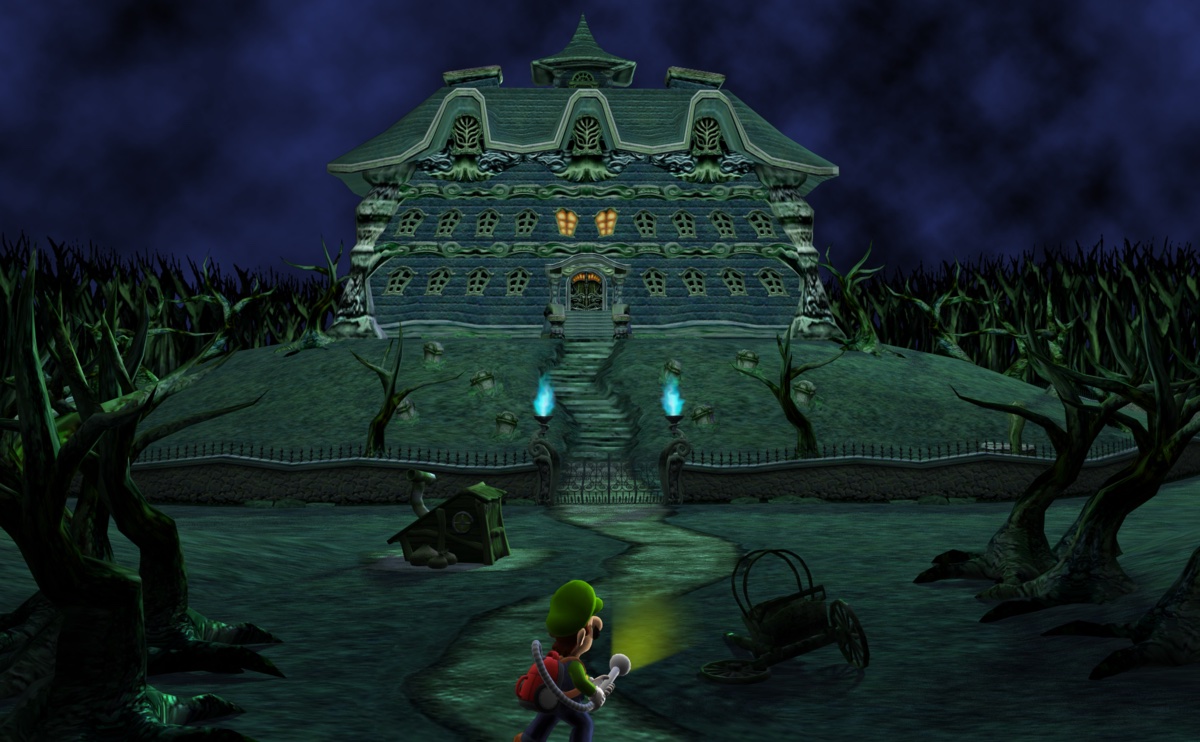
Storytellers have long used the supernatural to give life to abstract ideas. In this, we see our fears, regrets, and state of mind, all given life and form for our characters to be haunted by or to do battle with, either overcoming or perishing in the end. It is as much a fight against nature as it is against themselves. And no other form of this has endured quite like that of the haunted house.
In the introduction to Hauntings: Tales of the Supernatural, Henry Mazzeo wrote of this saying: “the Gothic castle is the silent sovereign of literature casting its long shadow across time. It is the fortress of our fears and the summit of our hopes. Lofty, lonely, unobtainable, it remains a challenge and a mystery to every age.”
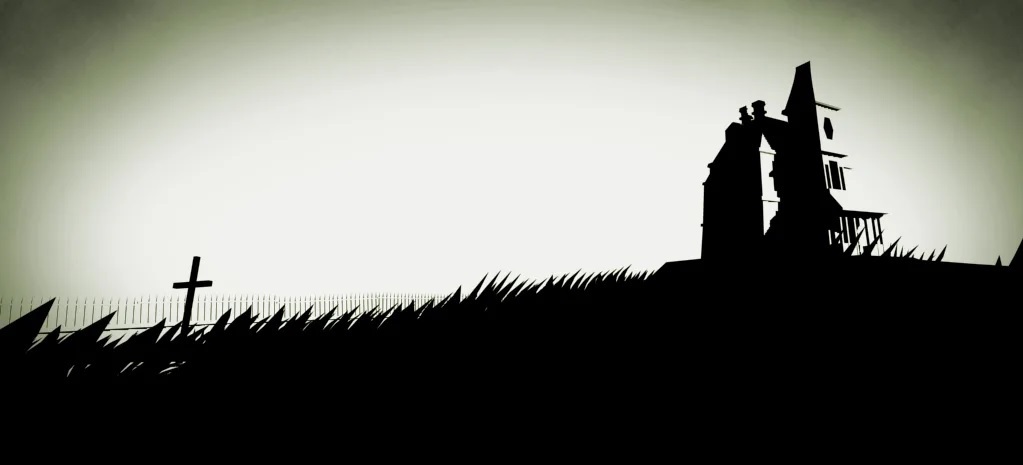
The History of the Victorian Manor
The nucleus of the haunted house can be traced back to the advent of gothic horror. Horace Walpole set the style of gothic horror in 1764 with his novel The Castle of Otranto, which he wrote after a dream he had, “a dream, of which all I could recover was, that I had thought myself in an ancient castle and that on the uppermost banister of a great staircase I saw a gigantic hand in armor. In the evening I saw down, and began to write, without knowing in the least what I intended to say or relate.” This hand would appear in the film adaptation of the highly influential The Old Dark House. This one novel founded a whole genre which led to the works of Edgar Allen Poe, Mary Shelley, John Boynton, and Stephen King.
Over the years, the gothic castle slowly lent itself to the Victorian manor. Talk of haunted houses often leads us to immediately imagine old Victorian manors with flickering candlelight, creaky floorboards, spiral staircases, the black-clad mourning widow, and unceasing fog. There’s a reason we associate them with hauntings.

After the American Civil War, there was a period of wealth disparity. The rich built opulent mansions, borrowing design features of gothic architecture. The buildings were meant to make a statement of power and wealth. They were tall, imposing things with ornate trim, mansard roofs, lofty towers, and grand windows. Inside was a complex labyrinth of rooms, often superfluous and unused, storing wealth with secret passages so the staff could move about unseen to not disturb the guests.
After the first World War, the age of progress ushered in a new style of architecture; modern, simple, and clean. The Victorian Mansions were now antiquated, seen as monstrous eyesores that flaunted excess wealth. Many saw them as reminders of a death from a darker time of war, the widows it left poor, and the sick who had no cure or could not afford one. After the Great Depression, many of these were left abandoned, slowly rotting into ruin, only the home of bats and bad memories. A ghost.
The endurance of the haunted house is a combination of man’s fear of the unknown, especially death, and the intimate relationship we inevitably build with our homes. Homes are typically speaking, safe places, a place of familiarity and comfort, where we feel in control. They are ours. But this leads them to be a place of tragedy and of horror. And there is no other medium that lends itself to horror quite like video games.
Enter the Survival Horror

Only released in Japan by Capcom, 1989’s Sweet Home for the Famicom acted as the foundation for survival horror. A team of documentary filmmakers enter the old mansion of a famous artist to recover his lost works. But the tragedy of what happened to the artist and his family now haunts the place is anything but kind. A once-proposed remake would eventually shift gears and become Resident Evil.
The Spencer Mansion from Resident Evil is one of the most iconic locations in gaming history. Built by architect George Trevor, known for his ground-breaking style, the mansion is a blend of styles but most specifically, Gothic and Victorian. All the hallmarks exist within the mansion: stairs as focal points, large windows, balconies by towers and turrets, secret passages, and an asymmetrical design featuring a labyrinth of rooms and halls adorned by statues, paintings, and chandeliers.
The Spencer Mansion’s specific design is dual-purpose. Not only does it evoke the haunted house and its complex layout lends well to game design, but it is also thematically relevant. While the mansion was publicly to serve as an American retreat for Spencer, it was truly to maintain secrecy on the research of the Progenitor Virus. The mansion reflects Umbrella Corporations’ power, wealth, corruption, and feelings of superiority while trying to display class to the public eye. Like the Victorian society built on oppression. But literally hiding beneath this veneer, is the underground lab and the true face of Umbrella.
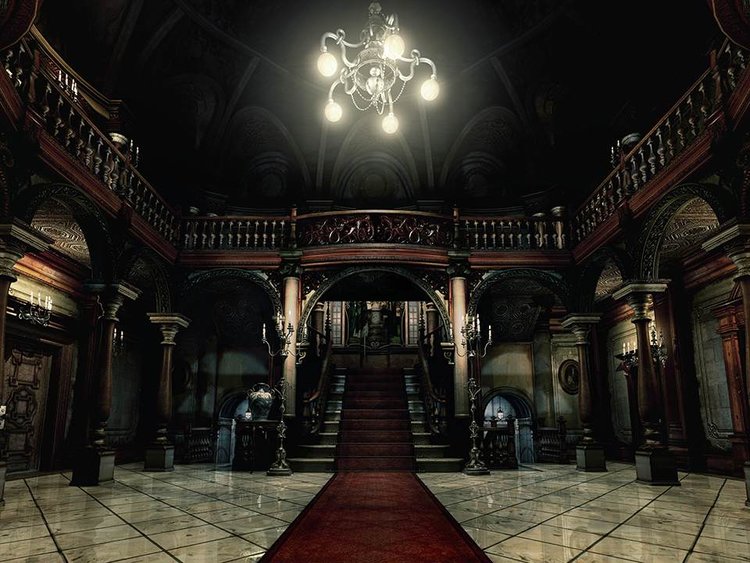
This notion is also used in Luigi’s Mansion, as the titular mansion is made by the Boos specifically to suit the needs of the gallery ghosts. It’s a tailored space, designed as a trap but with the veneer of home. Going back to Super Mario World, the Boo Mansions were many players’ first encounter with a game space that defied worldly conventions. The Mansions involved loops that had to be broken by going backward and other trickery.
Videogames inherently have one navigating a space, and when that space is actively defying all logic or you specifically, it is a feeling unlike any other. We design our houses with purpose much like how a level designer works to subtly guide you through a space using lines, framing, and color. These spaces whether real or digital have a logic to them and we can place our trust in that.
In Control, the story takes place in what is known as “The Oldest House”, a featureless and Brutalist-styled skyscraper that is bigger on the inside than outside, much like the house from The Navidson Record. While The Oldest House exists in New York, it cannot be found unless the individual is actively looking for it.
While The Federal Bureau of Control resides within it, the building’s interior constantly shifts in space-defying ways and other realities leak in. The Oldest House has its share of troublesome occupants, but it is not the occupants that make the space inhabitable but the space itself. The Oldest House seems to reject definement. It mimics space only to render it absurd. The more that the bureau tries to define it, the more it rejects it.

It’s a very human conceit to try and bring our own sense of order to nature. We try to keep our home separated from the natural world, but it often fails as tree roots grow and crack foundations, roofs leak, mold spreads, bugs infest, and animals find their way into nests. At the same time, we define these spaces, categorizing our homes into areas meant for eating, sleeping, and bathing. But nature doesn’t care. Water and mold do not think of you. The Bureau moved their operation into The Oldest House and tried to define the place and make it conform to their idea of a house. We see rooms and halls and make of it a house, but perhaps The Oldest House simply just is.
Humans are prone to apophenia; often looking for a pattern or connection of some kind in unrelated things or chance events, to give life meaning and structure. The Oldest House might be attempting to suit human needs but not quite getting it right, struggling to grasp the concept of a house and what these spaces are used for. Like an alien presence watching every bizarre task and behavior, we do throughout the day, unable to truly communicate or make sense of our internal world.
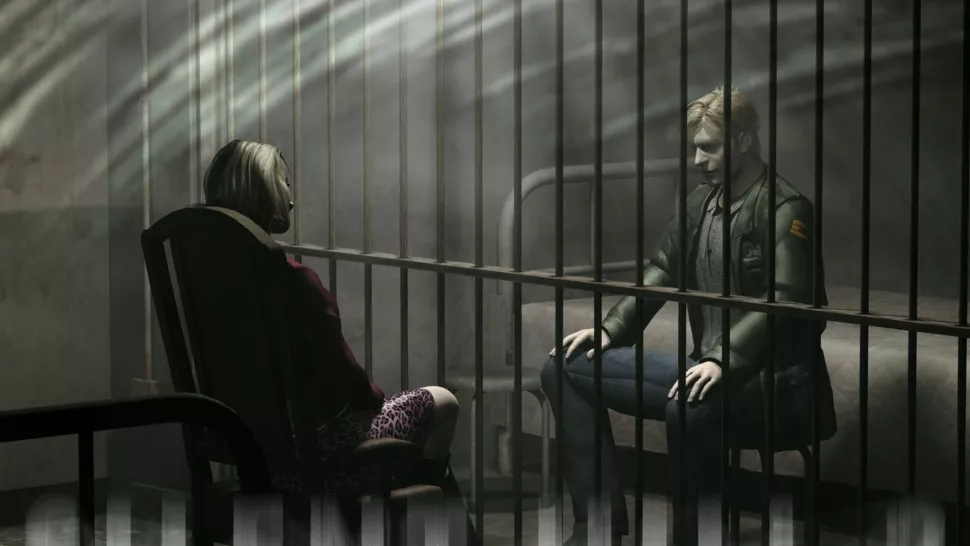
A haunting is sometimes of our own making; a projection of our fears and repressed memories onto an area often benign like some lonesome place (as August Derleth would call it) on our frequented paths. Places like a shadowed corner behind the shed, the dark trees where the streetlight can’t quite reach, or the wooded short-cut to the general store. Young boys and girls sprint by these but sometimes hear the breathing, the scurry of its yellowed claws as it begins its pursuit. They feel the heat of its breath and maybe they catch a glance of its scaly tail retreating into the dark. They share this story at the schoolyard or at home, and their friend shares what they saw or heard; that their older brother told them the kid who went missing three years back was eaten by it. Each child’s description blends until it becomes a chimera. Just stories, the parents say, but just like a young boy taunted and teased that he is a “freak” until he truly believes it, what choice does this lonesome place have but to internalize it and manifest it?
In Silent Hill 2, there is a long, wooded trail that James Sutherland takes to walk from his car to town. During that walk, I could swear there were footsteps trailing behind me, but upon turning there was nothing there. Continuing on, it’d eventually happen again. Every few years I inevitably return to this game, and I hear it every time. To this day I don’t know if the sound design does that purposely or if it is something that I brought to it, much like the baggage James brings to the town only to be haunted by, and I don’t want to know the answer. Every time I return, I still look back, thinking this time maybe it will be there.
The town of Silent Hill stands somewhere between an existing threat and a haunting of our own making. Sometimes it’s the evil deeds that happen in a house that haunts it, but other times those deeds are a symptom of being in the house. It can be hard to determine where it all began, symbiotic as we are with our homes. Silent Hill is a singular entity, a haunted house with streets for halls and buildings for rooms. The town has a history of cultist rituals and terrible deeds, but it is the land it’s built on that is the reason for it all. Before European settlers colonized, the Toluca Lake area was considered a spiritual place. The Native Americans called it “The Place of the Silent Spirits” or “Silenced Spirits”. It’s not clear if the town is truly sentient or it’s merely the power of the place that holds up a distorted mirror that gives our trauma life. Perhaps Silent Hill doesn’t haunt us, we just haunt ourselves.
In the foggy plane of existence of Silent Hill, streets become inexplicably blocked creating the structure of the haunted house, obfuscated by fog. But unlike a mansion filled with an abundance of useless things, every object becomes purposeful and meaningful whether the individual knows it or not. The objects in a room, the locations they find themselves going through, and monsters that stalk them in the halls. James and Angela can be in the same room of the house but see different things.
Silent Hill is filled with dream logic and motifs. Despite multiple playthroughs, the memory of it often feels nebulous like remembering a dream because it is so effective at making everything feel off. Characters act and talk as if in a trance, facial expressions are hand-animated, lines are often delivered strangely, and rooms feel like they are set up incorrectly. It’s easy for modern audiences to think these are flaws, some product of age, but it’s never clear what’s purposeful and what it isn’t. We are all prone to projection, and only in a medium with player agency can Silent Hill bleed into leaving it impossible to tell what the town is projecting and what you are. Where the house begins and where you end.
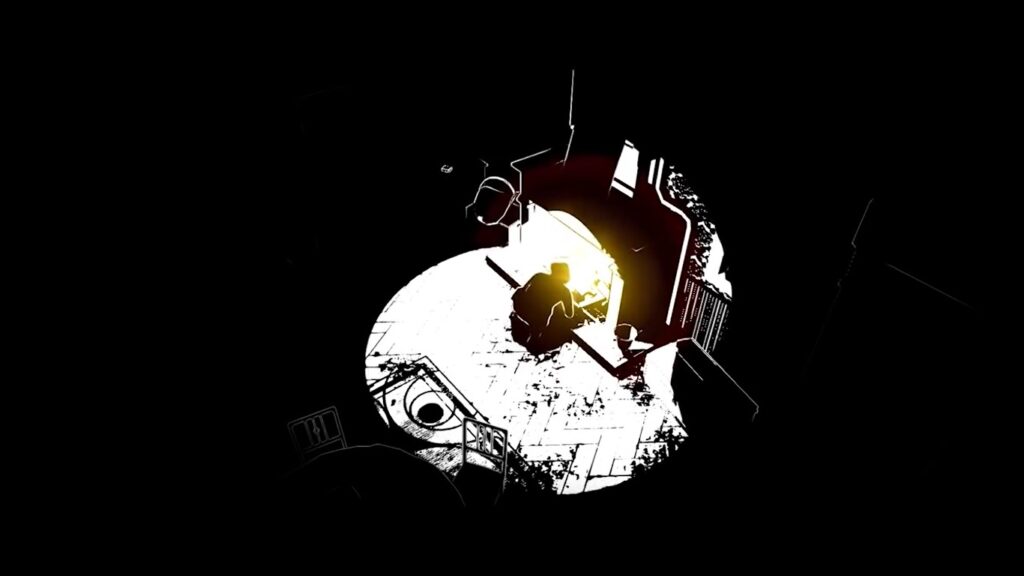
A home is an extension of ourselves. What we place in them and the order we keep those items in tells of their inhabitants. They become a companion. So, when our home becomes a place of danger it can feel like a deep betrayal.
The Ishimura from Dead Space and Sevastopol Station from Alien Isolation is home to their inhabitants. They work and sleep within them, trusting that the walls will keep them safe from the indifferent vacuum of space. But, like a dangerous mold silently creeping into the walls, the alien presence transforms their home into a place that works against them. It destroys it from the inside out.
Houses rot slower than the flesh. Even when a home is abandoned, it still stands for decades waiting. Does it feel abandoned, cast out, and punished? Does it long for the laughter that echoed down its halls, the passion of lovemaking, the fragrant aromas from cooking to be breathed in, and the notches on a door frame marking growing children? To be filled up and made whole with life? Does it wonder why it was left behind, empty, and alone, like a child growing up wondering why they weren’t good enough for their parents?
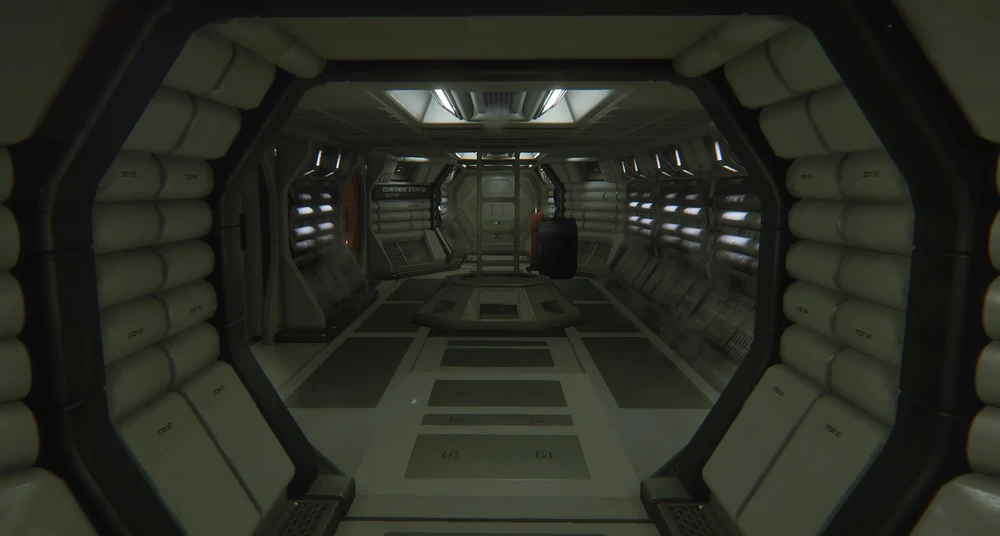
In the game, Anatomy, there is no ghostly presence, no alien invader, or masked killer, you are already in the bowels of the threat; it’s the house itself. The player explores an abandoned home finding cassette tapes to be played that describe the nature of a house. They generally speak of the idea of a house as an entity.
“The anatomy of the house is such that the similarity is less superficial than it may seem. To carry it further, if we were to dissect a house as we might a human cadaver, we would find ourselves able to isolate and describe its various appendages and their functions in a decidedly anatomical fashion. There’s even a fair number of direct comparisons to be drawn between those organs of the house and the human body.”
The longer the player is in the house the more things begin to break down and it becomes unclear if these tapes are left by someone or if it is the thoughts of the house itself. The words become more outspoken, describing these haunted houses as things brought into existence only to be abandoned when it no longer suits its maker. That it may stare out it into the darkness excited to see someone approaching and wonder why they weren’t good enough as the person passes by.
A tape speaks of a visitor who stumbles in with engorged ticks, spits on the carpet, and urinates on a wall. How a door slams behind him and he falls down the stairs, bones snapping.
The resentment that emanates from the house, manifests in a rejection of the player. Objects are duplicated, a door opens to another broken door, some items hang on the wall wrong like a mirror on its side, others like chairs clip through the wall a few feet off the ground and strange geometry bulges from the walls. What would be a glitch in any other story, becomes the hostile digestion of an organism within an organism.

The House tells us: “Each night we shut our senses to the world for hours at a time, trusting in the house to keep us safe until next we wake. In this state of extreme vulnerability, we will spend something like twenty percent of our lives. Anything might stand beside us, watch us, keep us company until dawn and we would never perceive it. We can only pray that the house will not let such things carry on while we sleep. In this way, during these hours, the bedroom seems less like a mind and more like a mouth. For it is here that the house is most likely to betray us. It is here that we place ourselves most at the house’s mercy and spend each night hoping that it will not bite down.”
We put a lot of trust in our houses, more than anything. We trust they will stand in the worst of storms, that they will protect us and keep us warm. We trust it will be there when we get back. That when we open the door to our bedroom, it will be our bedroom on the other side. We trust our house won’t hurt us. And of course, we do. To think otherwise, that our house has feelings, senses, autonomy, or is anything but a house would be ridiculous.
Right?
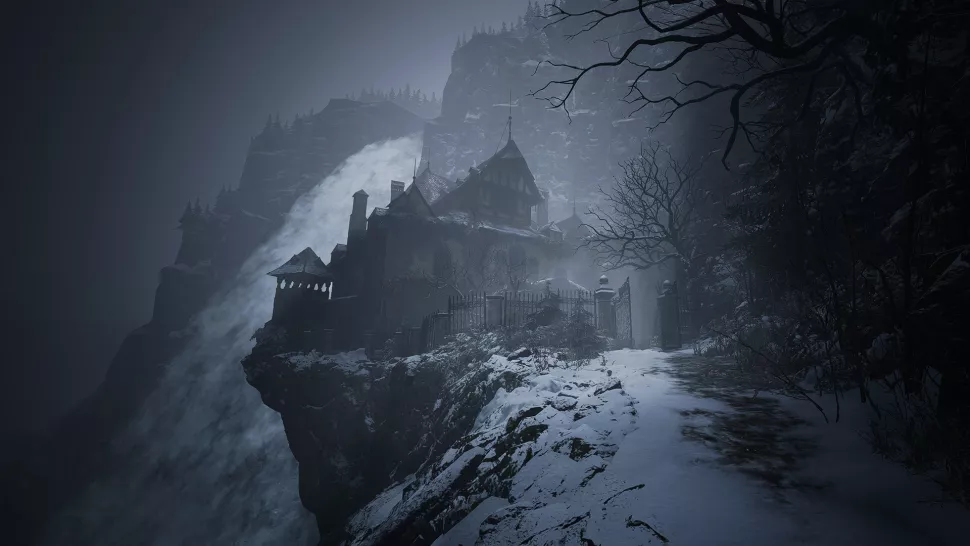
Return now to that silent sovereign stretching its shadow through time, of a child’s story of that dark lonesome place, of the tragedies wrought there, and of its struggle to make sense of it. The house and inhabitant begin to blur. And in that haze, we ask if there is a ghost, and the truth is…
All houses are haunted.

-

 Features4 weeks ago
Features4 weeks agoFarewell to a Beloved 13-Year-Old Isekai Anime That Brought Us Endless Laughter
-

 Technology3 weeks ago
Technology3 weeks agoGamification and Productivity: What Games Can Teach SaaS Tools
-

 Features3 weeks ago
Features3 weeks agoThis Upcoming Romance Anime Might Just Break the Internet; Trailer Just Dropped!
-

 Features2 weeks ago
Features2 weeks agoDon’t Watch These 5 Fantasy Anime… Unless You Want to Be Obsessed
-

 Culture3 weeks ago
Culture3 weeks agoIs the Gaming Industry Killing Gaming Parties?
-

 Features4 weeks ago
Features4 weeks agoWait, What?! Tom & Jerry Just Turned Into an Anime and It’s Glorious!
-

 Features1 week ago
Features1 week ago“Even if it’s used a little, it’s fine”: Demon Slayer Star Shrugs Off AI Threat
-

 Game Reviews3 weeks ago
Game Reviews3 weeks agoCall of Duty and the Myth of Military Realism: Tactical or Just Tacticool?
-

 Guides4 weeks ago
Guides4 weeks agoHow to Earn and Spend Diamonds in Mobile Legends
-

 Technology3 weeks ago
Technology3 weeks agoDigital Cash: For Gamers Who Don’t Ask Permission?
-

 Technology4 weeks ago
Technology4 weeks agoDiscover the Top PDF Drive Tool Today
-

 Guides4 weeks ago
Guides4 weeks agoHow to earn a lot of gold in WoW The War Within, a step-by-step guide when playing as a druid
























